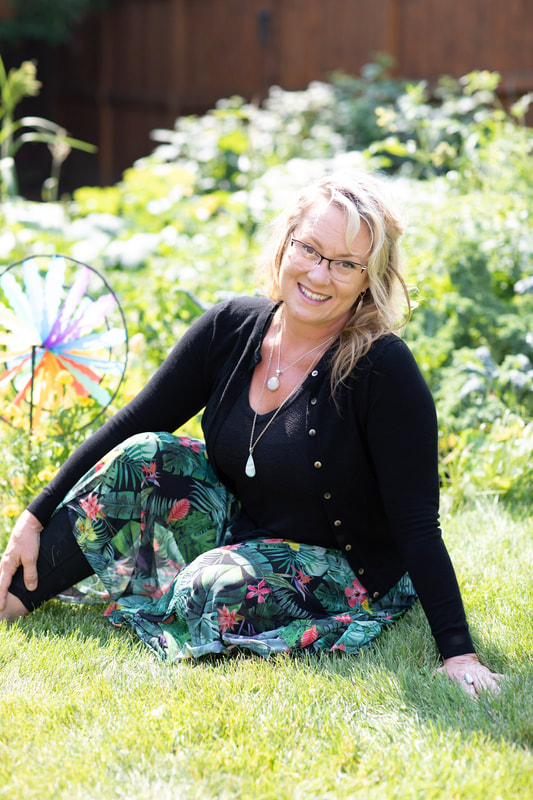|
Both Art Therapy and Kundalini Yoga share the powerful healing effect of integrating the left and right hemispheres of the brain. Typically the left side of the brain rules the orderly, statistical, mathematical, logical, practical, rational way of thinking, seeing things in straight lines. The right side of the brain represents passion, experience of taste and feelings, creativity, free spirit, imagination, yearning, sensuality, movement, vivid colours and the senses. Without activities that stimulate integration within each side of the brain, it is difficult for one side to make sense of how the other sees things. You cannot put feelings and expressions into boxes as the left hemisphere would require, they will become restricted; they must be felt to truly be experienced. Subsequently, the right brain also has difficulty making sense of how the left-brain sees things. As a society, we tend to be mostly left brain dominant and this causes an imbalance that can create a great disruption in the natural flow of everyday living. This is why it is so important to create integration and balance within both sides of the brain. Observing and especially drawing or creating art allows for this integration in the most therapeutic way. As does meditation, mindfulness and the many yogic postures within Kundalini Yoga. Kundalini Yoga is a prime example of creating space for this
occurrence. Whenever we do anything that requires logical and creative thought simultaneously, we are integrating the hemispheres of the brain. Another powerful way both Kundalini Yoga and Art Therapy work to change the brain is by rerouting neurotransmitters. Neuropsychologist Donald Hebb first used the phrase, “Neurons that fire together, wire together” in 1949 to describe how pathways in the brain are formed and reinforced through repetition. What this means is we develop habits and ways of being in the world (that may not always serve our highest purpose). Both Art Therapy and Kundalini offer an opportunity to explore life in new ways using mindful awareness of our emotions, messages from within the body and tactile sensory expression through art making. What is Art Therapy? Art therapy is a mental health profession that uses the creative process of art making to improve and enhance the physical, mental and emotional well being of individuals of all ages. It is based on the belief that the creative process involved in artistic self expression helps people to resolve conflicts and problems, develop interpersonal skills, manage behavior, reduce stress, increase self esteem and self awareness, and achieve insight. Art therapy uses the creation of art as a primary mode of expression and communication (American Art Therapy Association, 2013). It integrates psychotherapeutic techniques with the creative process to improve mental health and wellbeing. Sometimes referred to as creative arts therapy or expressive arts therapy, it encourages people to express and understand emotions through artistic expression and the creative process. By making art in a spontaneous way, one is able to bring unconscious feelings to consciousness. Art Therapy can help a person give expression to their feelings and hidden inner conflicts that they may not have words for. As one creates, they are able to uncover aspects of self that may be locked in the body. When people are then able to associate feelings verbally to the artwork created, the therapy speeds up recovery. The idea of using art in psychotherapy has been around since the early days of Carl Jung. This modality of healing has continued to grow and expand showing people how the benefits of making art in a safe, secure setting can be. It is through the making of art that feelings trapped inside the body can be moved and expanded on, bringing an awareness to ourselves that was before uncovered. What is Kundalini Yoga? Kundalini Yoga is described as the Yoga of Awareness or Householders’ Yoga, accessible to all. It is a powerful science that rewires neurotransmitters in the brain working on not only the physical body but also the nervous, endocrine and glandular systems. A large focus within the practice, for instance, is the drishti or eye-gaze during meditations and postures (asanas). When the eye gaze is focused behind closed lids between the eyebrows (third eye), a pressure builds in this region activating the pituitary and pineal master glands. This works to regulate the whole body and increases serotonin and other neurotransmitter levels to bring a calming, happy, peace to the mind. Through regulating hormones and the glandular system, Kundalini yoga strengthens, heals and changes the brain, body and the way we respond to stresses in our lives. Another fascinating component of Kundalini yoga is its ability to remove emotional blocks within the body. As life goes on, traumatic and stressful moments we experience become lodged within our bodies. Without opportunities for safe and healthy release, these memories and ways we develop to cope in the world slowly become a part of our personality. Although we may have needed these coping mechanisms at one or more times in our life, often they become a source of pain, as they no longer serve the purpose they once did. For instance, maybe you were bullied as a child and now find yourself on guard and ready to attack when provoked, when in reality the threat is no longer with you. Perhaps as a child you were scolded or even physical reprimanded by your parents for being “too loud” or “acting out” and this has created a deep-seated fear within you to speak up for your self in the world. Maybe this stifling of your voice and spirit has even created a thyroid condition or goiter? These emotions in the body are real and will eventually manifest into physical ailments. By bringing mindful awareness to the body and facilitating release through postures, mantra and meditation, we are invited to let go of these parts that no longer serve us and hold us back from living life to our fullest potential. In this way, Kundalini Yoga can bring about strong releases of emotion that help to clear the subtle bodies that sustain and support our soul’s path. In Conclusion By combining Art Therapy approaches and Kundalini Yoga, I invite you to experience the profound healing that both modalities offer. No artistic expertise is needed and there is never any pressure to fold like a pretzel or push yourself beyond what is safe for your own body. Honouring and listening to your body and allowing space for feelings and messages to arise is all that is required for you to step into a new way of being in the world. I look forward to crossing paths with you soon. May all beings be Blessed, Livdeep Kaur (Charmaine Husum) http://www.centreoftheheart.com
0 Comments
Leave a Reply. |
AuthorCharmaine Husum runs a private Art Therapy practice online and in Calgary Alberta. She is also an Artist, Kundalini Yoga teacher and trained in the somatic approach of Integrative Body Psychotherapy, Reiki and Mystical Integration. Her current research enthusiasms are in neuroplasticity, neuroscience, epigenetics, mystical integration and intergenerational trauma; on which she is currently writing a book and creating online courses. She specializes in working with trauma and symptoms of PTSD and C-PTSD as well as Autism, Depression, Anxiety, Eating Disorders, Addiction and other mental health symptoms. Archives
July 2023
Categories
All
|
"Sometimes the smallest step in the right direction
ends up being the biggest step of your life.
Tip toe if you must but take the step".
- Naeem Callaway
© 2022-24 Centre of the HeArt
Website Design By: IA Creative
Website Design By: IA Creative


 RSS Feed
RSS Feed



